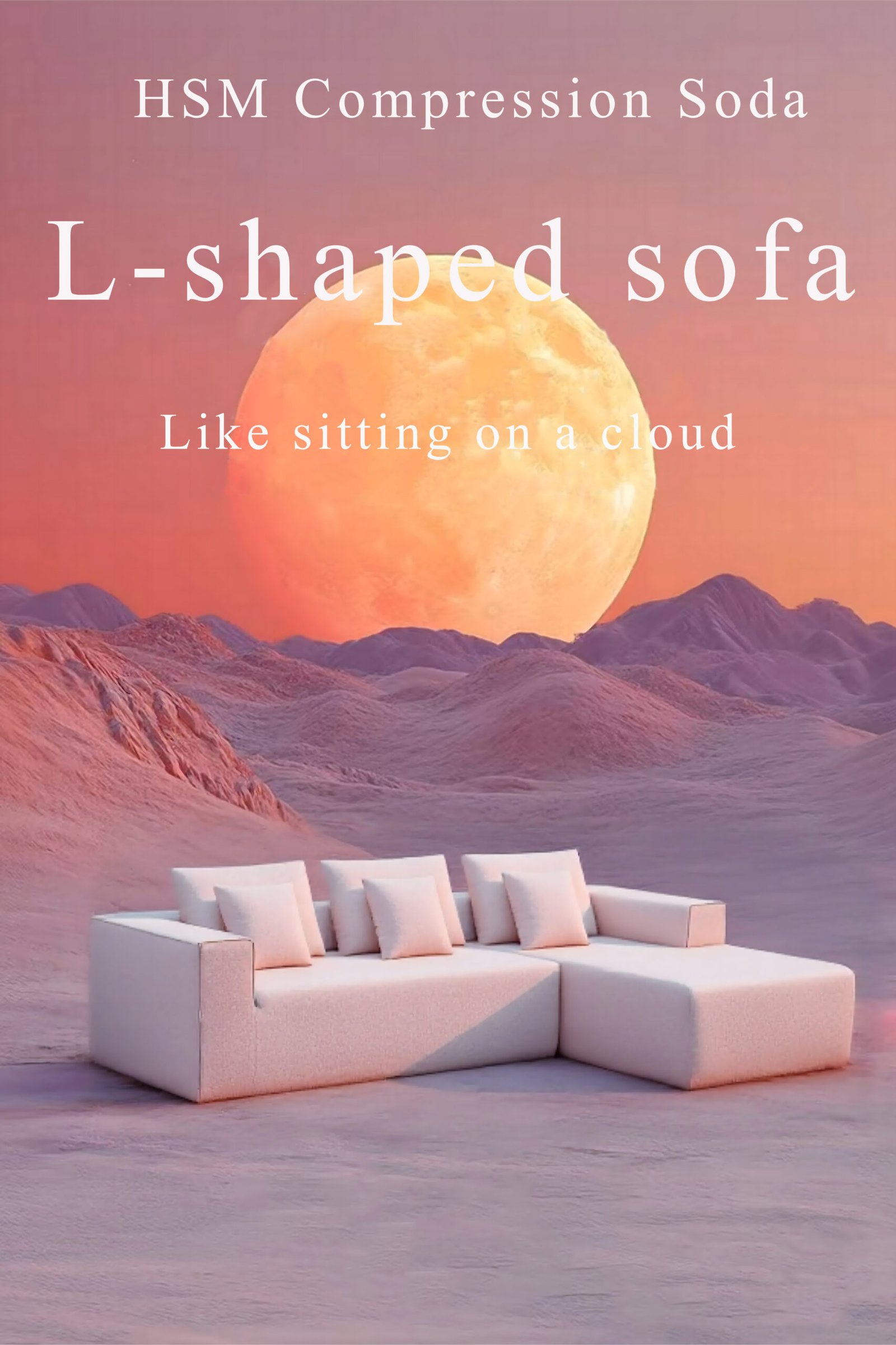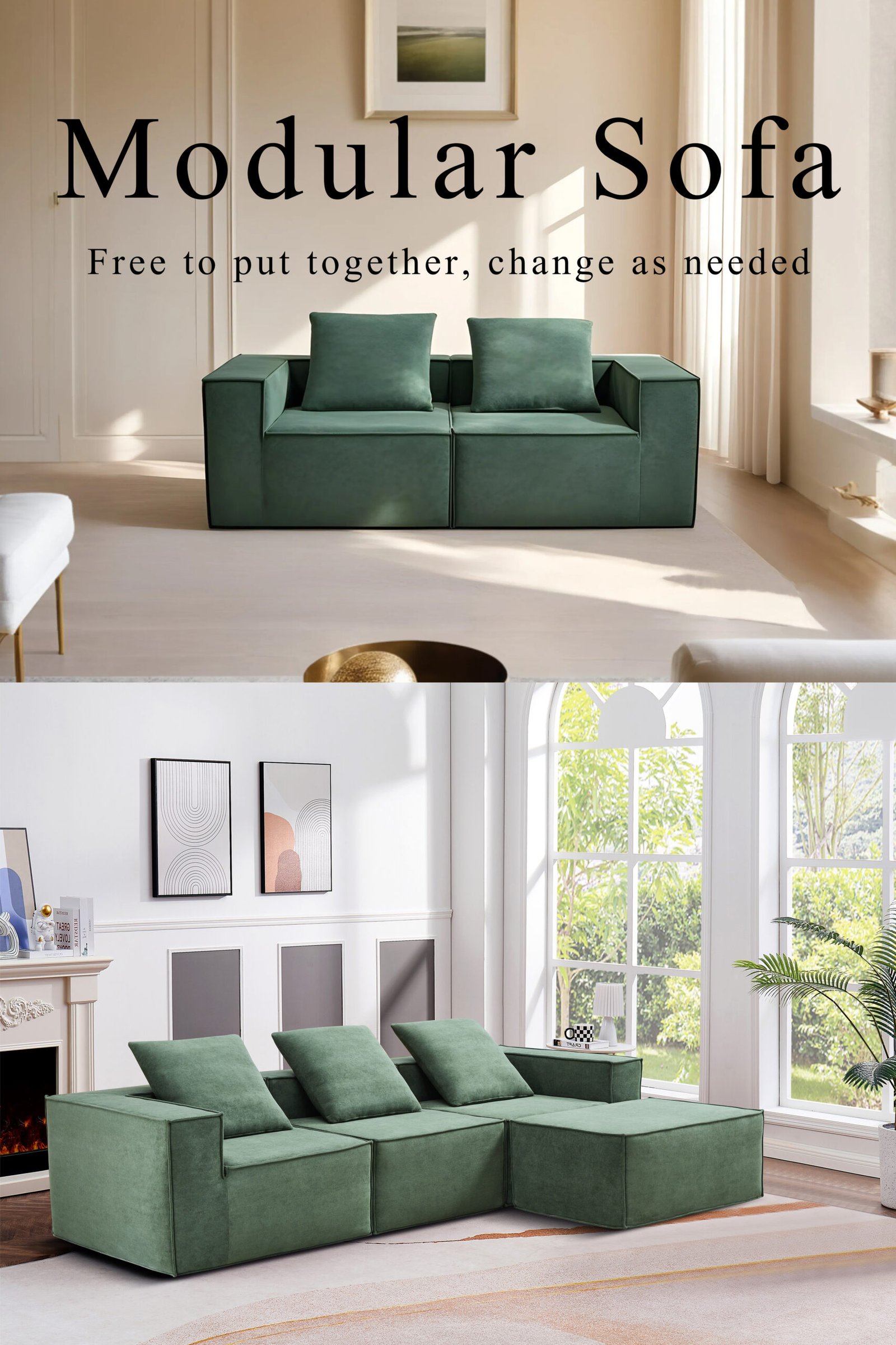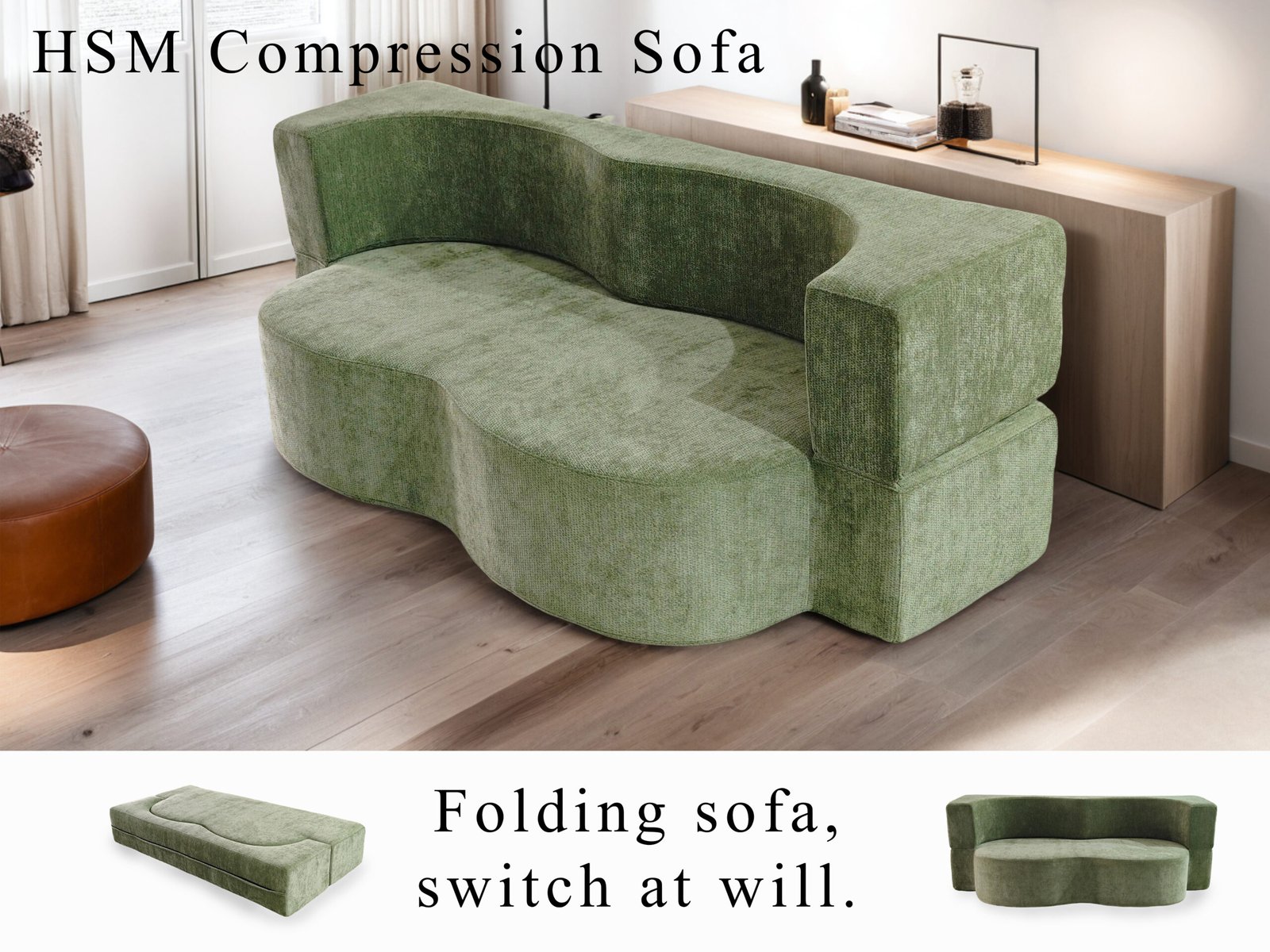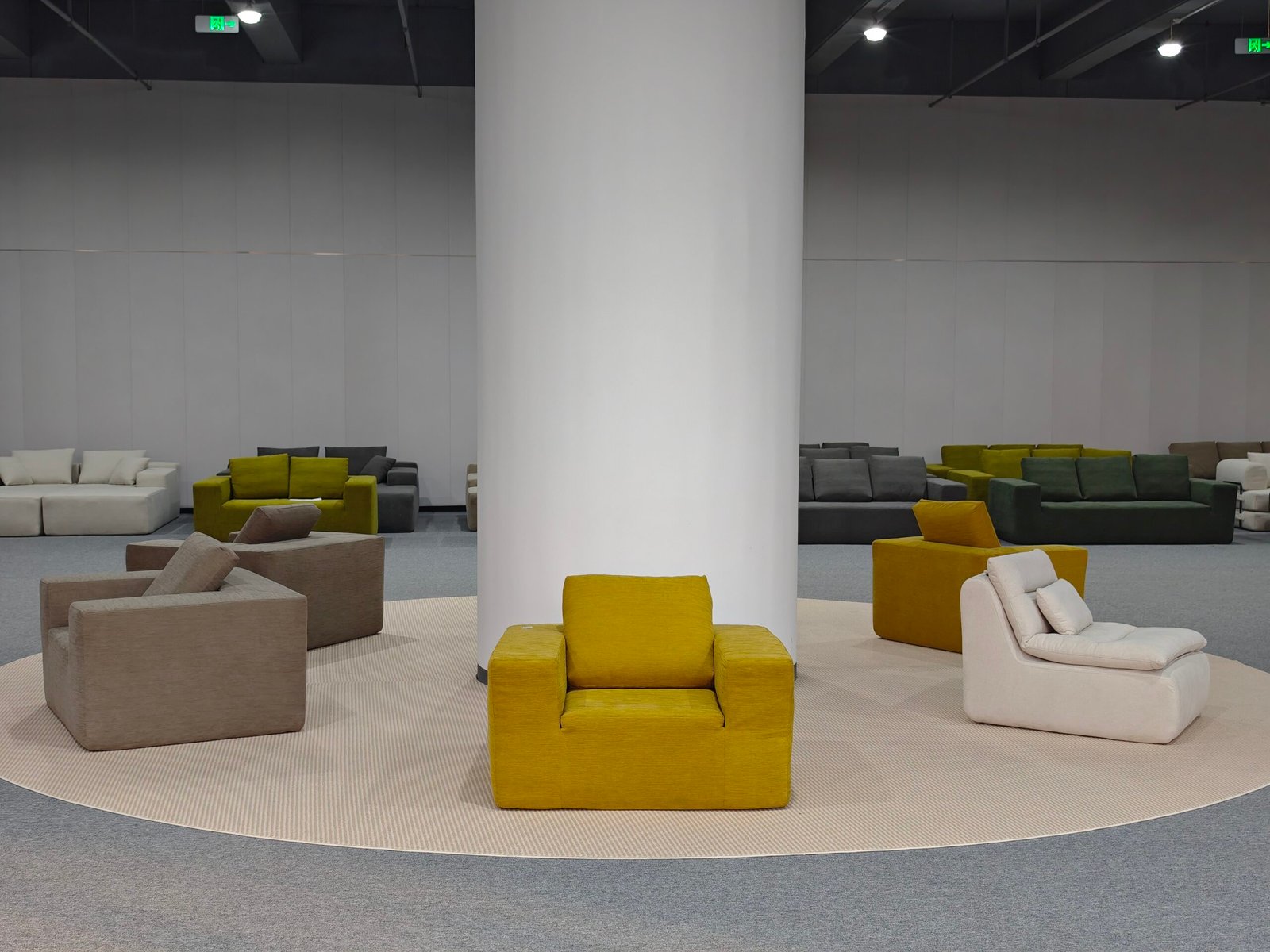
Traditional sofas take up too much space, yet lack flexibility—something many modern homes can no longer afford.
The design concept of the compression sofa is to combine compact structure, ergonomic support, and multifunctional usage in one adaptable and space-saving furniture piece.
Let me break down how this concept reshapes the way we think about furniture—especially in small or multifunctional spaces.
What defines the design of a compression sofa?

In today’s apartments, space is a luxury. We can’t afford to waste it on bulky, single-purpose furniture anymore.
Compression sofas are engineered to reduce volume during transport and storage, but expand to full size when in use—without compromising comfort or structure.
This means they’re more than just “smaller” sofas. Their very design—from frame to fabric—is focused on adaptability.
Core Features of Compression Sofa Design
| Element | Description |
|---|---|
| Compact Transport | Ships flat or tightly packed for easier delivery and storage |
| Restorative Expansion | Returns to full shape and comfort post-unpacking |
| Modular Construction | Components like arms, seats, and backs are often reconfigurable |
| Multifunctionality | Converts into bed, storage unit, or lounger as needed |
When I first designed a compressed corner sofa for a client in a 38m² studio, the feedback was clear: “It finally feels like I have a real living room—without losing my bed or workspace.”
What materials make the design possible?

Soft on the outside, smart on the inside—that’s the heart of compression sofa material science.
Compression sofas rely on high-resilience foam, elastic fabric, and reinforced modular frames that can handle folding, rolling, and vacuum compression.
These materials don’t just make the sofa lightweight and flexible—they also ensure it regains its form after being compressed.
Material Breakdown
| Component | Best Choice | Purpose |
|---|---|---|
| Frame | Solid pinewood or light alloy steel | Keeps sofa stable while staying light |
| Foam | High-resilience (HR) foam (30–35kg/m³) | Expands well and supports weight |
| Fabric | Polyester/spandex blends | Durable, stretchy, and easy to clean |
| Springs | S-shaped springs or pocket coils | Adds bounce and shape retention |
I once tested a batch of low-cost foam—looked great on day one, but after one week compressed, it never fully bounced back. Never again. Now, I always specify 35kg/m³ foam or higher.
How does the internal structure support comfort?

A soft sofa that sags isn’t comfort—it’s a trap for your spine.
A compression sofa’s frame must balance lightness with load-bearing strength, while its suspension system distributes pressure evenly for all-day comfort.
Key Structural Design Elements
🔩 Modular Frame
Easier to ship, easier to assemble. The pieces lock securely but stay light.
🌀 Integrated Spring + Foam Layer
Springs take the shock. Foam keeps the comfort. The combo means long-term durability.
🔄 Multi-layer Filling
Polyfiber or memory foam adds contour, creating that “sink and support” feeling.
🔧 Reinforced Corners
Critical load points are double-secured to prevent collapse or squeaking over time.
I've disassembled enough failed sofas to know—if the base isn’t solid, no amount of cushioning will save it. Structure first, softness second.
How does the compression sofa save space?

Sofas used to be the biggest thing in the room. Now they’re becoming the smartest.
Compression sofas use smart folding, detachable modules, and hidden compartments to maximize utility in minimal square footage.
Examples of Space-Saving Features
- Flat-Pack Shipping: Easier to move into tight stairwells or elevators.
- Fold-out Function: Converts into a full-length sleeper for guests.
- Hidden Storage: Stash your blankets or remotes without clutter.
- Armless or Adjustable Arms: Reduce width for tight corners.
When I lived in a second-floor walk-up, I couldn’t get a traditional 3-seater through the stairwell. The compression sofa came in four boxes and was fully assembled in under an hour—by myself.
How does it achieve ergonomic support?

Looks are great, but how does it feel after 3 hours of Netflix? That’s the real test.
Compression sofas use layered cushioning, lumbar-conscious angles, and body-responsive foam to reduce pressure and support healthy posture.
Ergonomic Design Elements
✅ Contoured Backrests
Follow the curve of the spine, reducing slouch and fatigue.
✅ Medium-Firm Seat Base
Soft enough to sink slightly, firm enough to push back.
✅ Balanced Seat Depth
Ideal for both lounging and upright sitting.
✅ Neck and Lower Back Focus
Strategically placed support zones, especially in convertible models.
I've tested over 100 models in the past 5 years. The winners all had a common feature—foam that adapted to pressure changes without flattening out in 30 minutes.
What makes it visually appealing?

A good sofa can anchor a room. A well-designed one upgrades the whole vibe.
Modern compression sofas blend form with function—offering clean lines, customizable colors, and a balance of minimalism and comfort.
Aesthetic Options
- Neutral palettes (gray, beige, olive) for modern homes
- Bold tones (mustard, navy, burnt orange) for statement pieces
- Textured fabrics like boucle or linen-weave for tactile appeal
- Minimalist shapes that work in Scandinavian, Japanese, and mid-century styles
Plus, many brands offer interchangeable covers—so you can refresh the look without buying a new sofa.
Conclusion
The design concept of the compression sofa blends structure, function, and style into one compact solution—perfect for small homes, smart buyers, and anyone who values flexibility without compromise.